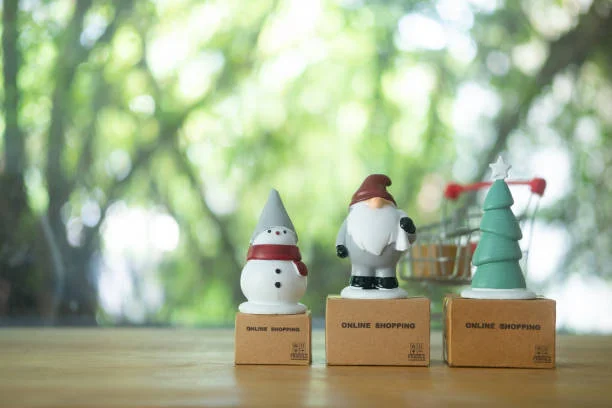Winter can strain your home in ways that often go unnoticed until a problem hits. Homeowners know the stress of cold spells, rising bills, and unexpected repairs, but the good news is that most issues are preventable prepare your house for winter.
This guide walks you through practical steps to keep your home safe, warm, and efficient. Your heating system is central to winter comfort, so regular checks and services are essential.
A trusted provider like Acorn Oil can make this process smoother when assessing heating options or upgrades.
Key Takeaways
- Prepare heating systems early to avoid breakdowns when temperatures drop.
- Insulation and draught control improve comfort and reduce energy bills.
- Pipes, roofs, and gutters need special winter protection.
- A simple emergency plan prevents panic during severe cold snaps.
Discover a related post that adds depth and value to your reading journey.
How to Prepare Your House for Winter
Winter preparation means checking your heating system, sealing heat leaks, and protecting pipes before temperatures drop. Inspect boilers, improve insulation, and secure the exterior to avoid costly problems.
Why Winter Preparation is Essential
Cold weather exposes weaknesses in your home. Heating systems work harder, pipes are vulnerable, and energy use climbs quickly. Preparing early gives you a more efficient home and avoids last-minute emergencies. It also extends the life of your equipment and reduces running costs.
Many homeowners overlook small issues that later become expensive repairs. Something as simple as a slow boiler response or a barely noticeable Draft can signal bigger trouble. Making time to inspect your home in autumn pays off all season.
Early action gives you flexibility. Engineers are less busy, materials are easier to order, and you can make improvements without rushing. A few hours of planning can save you from days of winter frustration.
Action: Create a simple checklist so nothing gets missed.
Heating System Check: Boiler Installation and Heating Tank Installation
Your heating system is the heart of winter readiness. When it runs efficiently, your home stays warm with less energy. When it struggles, you feel it in both comfort and cost. Homeowners often delay servicing until something breaks, but winter is the worst time for surprises.
If your system is older or unreliable, evaluating options like a new boiler installation or an upgraded heating tank installation can improve output and stability. Even a modern system needs routine attention to keep it safe.
Start with a general inspection. Listen for unusual noises, check the warmth of your radiators and confirm that heat reaches all rooms evenly.
Inspecting and Servicing Your Boiler
A yearly boiler service prevents breakdowns and ensures safe operation. An engineer can spot early signs of corrosion, leaks, or pressure issues.
Checklist
- Confirm boiler pressure is within normal range.
- Bleed radiators to remove trapped air.
- Make sure vents and safety devices are unobstructed.
- Clear the boiler area so it can breathe.
A well-maintained boiler runs more efficiently, meaning a warmer home with lower fuel use.
Action: Schedule a professional inspection before the first cold snap.
Considering a Heating Tank Installation
Homes with high hot water demand may benefit from a heating tank installation. A tank stores heated water so you have a steady supply even during busy hours.
Benefits include:
- Consistent temperatures throughout the home.
- Fewer periods of low water pressure during peak use.
- Additional efficiency when paired with a correctly sized boiler.
Installing a tank requires planning. You need the right capacity, proper insulation, and a suitable location with stable connections.
Action: Evaluate whether your current hot water system meets your winter needs.
Insulation, Draft Proofing, and Heat Retention
Generating heat is only half the challenge. Keeping heat inside makes the biggest difference to comfort. Insulation and draught control increase efficiency and reduce wasted energy.
Walk through your home on a cool day. Feel for cold spots near windows, floors, or doors. Notice any areas where warm air seems to escape or where cold air creeps in. Small fixes can add up to big savings.
Good insulation helps your heating system work less, extending its lifespan and lowering utility bills throughout winter.
Insulation and Loft or Roof Improvements
A large portion of heat escapes through the roof. Loft insulation adds a barrier that traps warmth inside. Check insulation depth, coverage, and condition. Older homes may need upgraded wall or floor insulation.
Pipes in the attic benefit from insulating sleeves to prevent freezing and heat loss.
Action: Inspect your loft and add extra insulation if it looks thin or uneven.
Sealing Gaps and Draft
Windows, doors, and floorboards are common sources of Draft. Simple materials like weather strips, caulking,g and door sweeps block cold air and stabilise indoor temperatures.
You can detect gaps by holding a hand near edges or using a simple stick of incense to watch the airflow. Correcting these small leaks creates instant comfort.
Action: Seal at least three noticeable gaps this week.
Retaining Heat Inside
A few comfort tweaks help your home hold heat longer. Heavy curtains limit window chill. Rugs warm floors and reduce heat loss. Moving sofas away from radiators prevents airflow blockage.
These adjustments improve heating efficiency without extra cost.
Action: Rearrange furniture to allow unobstructed heat circulation.
Plumbing and Pipe Protection
Plumbing is especially vulnerable in winter. Ice in the pipes expands and can burst lines or cut off the water supply. Preventative measures are far easier than emergency fixes.
Focus on spaces that are cold or unheated. Basements, attics, garages, and crawlspaces often hide unprotected pipes. A few minutes of inspection can prevent major damage.
Pipe Insulation and Outdoor Taps
Outdoor taps, hoses, and exposed pipes freeze quickly. Disconnect hoses before freezing temperatures arrive. Use insulated covers on external taps. Wrap exposed pipes with foam insulation sleeves.
Keeping water moving reduces freezing risk, so let a trickle flow during severe cold.
Action: Insulate pipes in areas where you can see your breath in winter.
Water Heater and Tank Checks
Water heaters work harder in winter. Check for leaks, flush sediment, and ensure the thermostat is set correctly. Tanks with expansion units need occasional inspection.
A small tune-up improves performance and protects the system from strain.
Action: Inspect your water heater for rust or moisture around the base.
Exterior Maintenance and Storm Readiness
Winter weather affects not just the inside of your home but the outside too. Snow, ice, and strong winds can cause damage if outdoor areas are neglected.
Preparing the exterior reduces hazards like falling branches, blocked gutters, or slippery paths. These tasks are easier to complete before winter storms arrive.
Roof, Gutters, and Drainage
Clean gutters to prevent blockages that cause ice buildup. Check for cracked tiles, loose flashing, or signs of wear. Good drainage keeps water away from your foundation and prevents leaks.
Clearing these areas helps avoid roof damage during freezing weather.
Action: Remove leaves and debris from all gutters before heavy rain or snow.
Outdoor Furniture, Plants, and Walkways
Store or secure outdoor furniture so it does not shift in strong winds. Trim shrubs and trees that might break under snow. Keep walkways clear to avoid icy hazards.
These simple steps keep your property safer all season.
Action: Spend one afternoon organising outdoor items before temperatures drop further.
Emergency Plan and Monitoring
Even with strong preparation, winter can bring surprises. A simple emergency plan keeps your household calm during power cuts or severe cold.
Backup tools and supplies prevent stress when conditions change. Monitoring systems also help identify issues early.
Backup Power, Smoke, and Carbon Monoxide Detectors
Check detectors and replace batteries before winter. Power cuts can occur at any time, so consider portable chargers or a small generator.
Preparing for temporary outages reduces disruption.
Action: Test all alarms today.
Monitoring System Health
Smart sensors can track temperature changes, boiler performance, and potential leaks. These tools help you react quickly before damage occurs.
If you prefer hands-off monitoring, some heating services include remote system checks.
Action: Add at least one sensor in a vulnerable area, such as a basement.
Frequently Asked Questions
1. What are the signs that I need a new boiler or heating tank installation?
Frequent breakdowns, inconsistent heat, or rising energy bills suggest your system might be failing.
2. How often should I service my boiler?
You should schedule a professional service once a year to keep it efficient and safe.
3. Will loft insulation actually reduce heating bills?
Yes. Better insulation keeps heat inside and allows your boiler to run less often.
4. What temperature should I keep my home at in winter?
Most homes stay comfortable between 18 and 21 degrees Celsius.
5. How do I know if my pipes are protected against freezing?
Pipes should be insulated, especially in cold areas. If in doubt, wrap them before winter.
6. Do I need to cover outdoor taps?
Yes. Covers protect the tap from freezing and help prevent burst pipes.
Conclusion
Preparing your home for winter is a smart investment in comfort, safety, and efficiency. By checking your heating system, sealing heat leaks, protecting pipes, and maintaining the exterior, you reduce the risk of costly repairs.
Start these tasks early and follow your checklist to enjoy a warm and stress-free season.
Tap here to explore more posts filled with practical insights and tips at Management Works Media.






